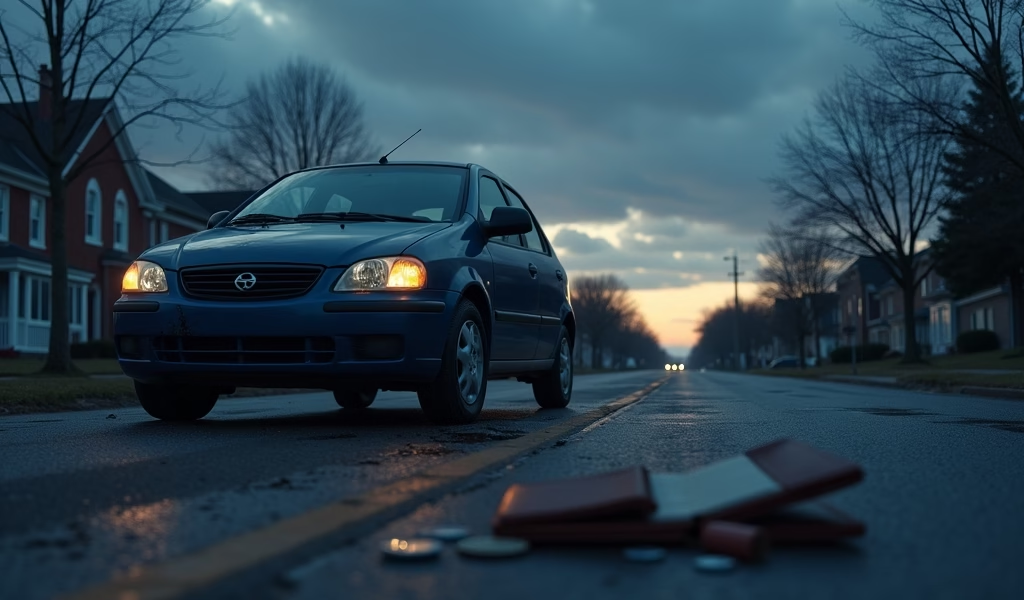Overview
This article provides strategies for reducing teen auto insurance costs, including shopping for policies across multiple insurers, taking advantage of discounts (good student, driver training), choosing insurance-friendly vehicles, adjusting policy structures, and promoting safe driving habits. Parents can potentially save hundreds or thousands of dollars through these combined approaches while still maintaining appropriate coverage for their teenage drivers.
Table of Contents
- Why is Teen Auto Insurance So Expensive?
- Smart Shopping for Teen Insurance Policies
- Discount Opportunities That Can Save Hundreds
- Vehicle Selection: Your First Line of Defense
- Policy Structure Adjustments That Balance Cost and Coverage
- Building Safe Driving Habits for Long-Term Savings
- Real-Life Savings: Success Stories from Parents
- Your Action Plan: Combining Strategies for Maximum Savings
- Conclusion
- Frequently Asked Questions
That moment when your teenager proudly holds their driver’s license brings mixed emotions – pride in their milestone, but also the gut-wrenching realization that your insurance premium is about to skyrocket. As an automotive specialist who’s helped thousands of families navigate this financial pothole, I can tell you that auto insurance for teenagers doesn’t have to break the bank. While it’s true that adding a teen driver typically increases premiums by 50-100% (sometimes even more), strategic planning can potentially save you hundreds without compromising coverage.
Insurance companies aren’t out to punish young drivers – they’re simply responding to statistical reality. But understanding how insurers calculate risk gives us the roadmap to significant savings. Let’s pop the hood on teen auto insurance and explore some proven money-saving strategies that actually work.
Why is Teen Auto Insurance So Expensive?
Before diving into solutions, it helps to understand why insurers charge teens so much in the first place. Insurance isn’t personal – it’s mathematical. And unfortunately, the numbers tell a concerning story:
- Teen drivers (16-19) are nearly three times more likely to be in a fatal crash than drivers 20 and older, according to the Centers for Disease Control and Prevention
- Inexperience behind the wheel leads to slower reaction times in dangerous situations
- Young drivers are more susceptible to distraction (especially from phones and passengers)
- Teenagers are more likely to engage in risky behaviors like speeding and tailgating
These sobering statistics translate directly to dollars. Recent industry data shows adding a teenage driver increases annual premiums by an average of $1,500-$2,500. For families with male drivers under 18, that increase can approach $3,000 in some regions.
The silver lining? Understanding this perspective helps identify specific strategies to reduce those costs while still maintaining appropriate protection for your newest driver.
Smart Shopping for Teen Insurance Policies

The first defense against premium shock is smart shopping. Not all insurance companies treat teen drivers the same way, and the differences between quotes can be substantial – sometimes shockingly so.
Cast a Wide Net When Getting Quotes
One of the most common and costly mistakes parents make is assuming their current insurance company will offer the best rate when adding their teen. In reality, different insurers use different risk assessment models and approaches to teenage drivers.
I’ve seen families save over $800 annually simply by switching companies when adding a teen driver. Get quotes from at least five different insurers, including:
- Your current insurance company (as a baseline)
- Major national insurers with teen-specific programs
- Regional insurers that may have more competitive local rates
- Companies specifically marketing to families with young drivers
Consider Usage-Based Insurance Programs
Technology has created new opportunities for significant savings. Usage-based insurance programs use telematics devices or smartphone apps to monitor actual driving behavior. For responsible teen drivers, this can translate to substantial discounts.
Programs like Progressive’s Snapshot, Allstate’s Drivewise, or State Farm’s Drive Safe & Save track factors such as:
- Hard braking and rapid acceleration
- Speeding tendencies
- Time of day driving occurs
- Total mileage driven
Teens who demonstrate safe driving habits can earn discounts of 10-30% through these programs. The monitoring also creates accountability that encourages better driving behaviors – a win-win for safety and savings.
Strategic Timing Matters
When you add your teen to your policy can impact costs significantly. Consider these timing strategies:
- Add teenagers to your policy only after they receive their license, not during the permit stage (in most states, teens with permits are covered under parents’ policies without additional charge)
- If your teen is getting licensed near your policy renewal date, ask your agent whether adding them before or after renewal would be more cost-effective
- Some companies offer lower introductory rates for new teen drivers that increase after the first renewal period
Discount Opportunities That Can Save Hundreds
Insurance discounts specifically for teen drivers can add up quickly, sometimes reducing the premium increase by 25% or more when combined strategically.
Good Student Discounts: Grades Pay Off
Most major insurers offer substantial discounts for students who maintain good grades. Typically, students need to maintain a B average (3.0 GPA) or better, or rank in the top 20% of their class. These discounts typically range from 10% to 25%, depending on the company.
Required documentation usually includes a current report card or a letter signed by a school administrator. Remember that these discounts aren’t automatic – you need to request them and provide proof regularly, usually every 6 months at policy renewal.
Driver’s Education and Training Discounts
Formal driver’s education courses do more than prepare teens for their driving test – they can also save significant money. Many insurance companies offer discounts of 5-15% for teens who complete approved driving courses.
Beyond the basic required courses, consider advanced driver training programs. Defensive driving courses and skid control schools not only build crucial skills but can also qualify for additional discounts with many insurers.
College Student Discounts
If your teen heads off to college without a car, don’t forget to notify your insurance company. “Student away” or “distant student” discounts can reduce premiums by as much as 30% for students attending school more than 100 miles from home without a vehicle.
Even if your college student does take a car to campus, the location might positively impact rates. A campus in a rural area might generate lower premiums than your suburban or urban home location.
Vehicle Selection: Your First Line of Defense
The car your teenager drives can dramatically impact insurance costs. While they might dream of a sporty convertible or powerful SUV, your wallet will appreciate a more practical choice.
The Insurance-Friendly Vehicle Profile
From an insurance perspective, the ideal teen vehicle has these characteristics:
- Four-door sedans or small SUVs with modest engine power
- Excellent safety ratings and multiple safety features
- Older models (but not too old to lack essential safety features)
- Vehicles that aren’t commonly stolen
Specific models that consistently rank among the most affordable to insure for teens include the Honda CR-V, Toyota RAV4, Ford Escape, Subaru Outback, and Mazda CX-5. These vehicles balance safety, reliability, and reasonable repair costs – all factors that keep insurance premiums lower.
As a mechanic who’s seen the aftermath of countless accidents, I can’t stress enough how important vehicle choice is – not just for your budget, but for your teen’s safety. A modest, well-maintained vehicle with modern safety features is the smart choice on multiple levels.
Safety Features That Translate to Savings
Modern safety features protect both your teen and your budget. Look for vehicles equipped with:
- Forward collision warning systems
- Automatic emergency braking
- Lane departure warning
- Electronic stability control
- Multiple airbags
Many insurers offer specific discounts for these advanced safety features, sometimes reducing premiums by 5-10% per feature. When shopping for a used vehicle for your teen, prioritize these safety technologies – they’re worth every penny in both protection and insurance savings.
Policy Structure Adjustments That Balance Cost and Coverage

Strategic adjustments to your policy structure can yield significant savings without dangerously reducing protection. This is where understanding insurance fundamentals really pays off.
The Deductible Decision
Raising your deductible – the amount you pay out-of-pocket before insurance kicks in – is a common money-saving tactic. Increasing a $500 deductible to $1,000 might save 10-15% on comprehensive and collision coverage.
However, this strategy requires careful consideration with teen drivers. Since they’re statistically more likely to be involved in accidents, only raise the deductible to an amount you can comfortably afford to pay if an accident occurs. Creating an emergency fund specifically for this purpose is a smart financial move.
Driver Designation Strategy
How your teen is listed on your policy significantly affects premiums. If possible, assign your teen as a secondary or occasional driver on your family’s least expensive vehicle rather than as the primary driver. This can reduce premiums by 5-20% compared to primary driver status.
Be honest with this designation, however. Insurance companies thoroughly investigate claims, and misrepresenting who primarily drives which vehicle can lead to denied claims or even policy cancellation.
Coverage Adjustments for Older Vehicles
For older vehicles with low market values, dropping comprehensive and collision coverage in favor of liability-only coverage can dramatically reduce premiums. A good rule of thumb: if the annual cost of comprehensive and collision coverage exceeds 10% of the car’s value, consider dropping these coverages.
For example, if your teen drives a vehicle worth $3,000, and comprehensive/collision coverage costs more than $300 annually, liability-only might be the more economical choice. Just be prepared to replace the vehicle out-of-pocket if it’s damaged.
Building Safe Driving Habits for Long-Term Savings
Beyond policy adjustments and discounts, perhaps the most effective long-term strategy for controlling insurance costs is helping your teen become a truly safe, responsible driver. This investment pays dividends in both lower premiums and peace of mind.
The Premium Power of a Clean Record
Nothing impacts insurance rates more dramatically than actual driving history. A single at-fault accident can increase premiums by 20-40% for three years or more. A serious moving violation like speeding or reckless driving can trigger similar increases.
By contrast, maintaining a clean record for three consecutive years can qualify teen drivers for good driver discounts, sometimes reducing premiums by 20% or more. These savings compound over time, making safe driving habits the single most valuable insurance strategy.
Teen-Parent Driving Contracts Work
Consider creating a formal driving contract with your teen that clearly outlines:
- Rules about passengers and night driving
- Expectations regarding speed and traffic laws
- Zero tolerance for cell phone use while driving
- Consequences for violations of driving rules
- Rewards for maintaining a clean driving record
These contracts create clear expectations and accountability. I’ve seen that teens with formal driving contracts are significantly less likely to receive tickets or be involved in accidents. The CDC offers excellent templates that you can customize for your family.
Real-Life Savings: Success Stories from Parents
Abstract advice helps, but real examples demonstrate how these strategies work in practice. Here are two success stories from families I’ve worked with:
The Johnson Family: $1,450 Annual Savings
The Johnsons were shocked when their insurance company quoted an additional $2,800 annually to add their 16-year-old son to their policy. By implementing multiple strategies, they dramatically reduced this burden:
- Shopping with multiple insurers (saved $650)
- Enrolling in a usage-based insurance program (saved $380)
- Applying good student and driver training discounts (saved $420)
Their final premium increase was $1,350 – still substantial, but less than half the original quote. The Johnsons also opted for a 7-year-old Honda Civic instead of the newer sports car their son had his eye on, preventing an additional $800+ in premium increases.
The Rodriguez Family: $1,100 Annual Savings
The Rodriguez family found savings through vehicle selection and policy structure when adding their 17-year-old daughter:
- Chose a used Honda CR-V instead of the new Jeep Wrangler their daughter wanted (saved $680)
- Increased deductibles from $500 to $1,000 (saved $220)
- Listed daughter as an occasional driver on the family sedan (saved $200)
Combined with standard good student discounts, their premium increase was manageable at $980 annually – a significant improvement over the initial $2,080 quote they received.
Your Action Plan: Combining Strategies for Maximum Savings
Insuring teenage car insurance will never be inexpensive, but implementing multiple strategies simultaneously can make the cost manageable. Here’s your step-by-step action plan for maximum savings:
- Start early – Begin researching options at least a month before your teen gets licensed
- Shop aggressively – Get quotes from at least five different insurers
- Pursue every possible discount – Good student, driver training, and safety features all add up
- Choose vehicles strategically – Focus on safety, reliability, and insurance-friendliness
- Structure your policy wisely – Consider appropriate deductibles and coverage levels
- Invest in creating a safe driver – The best long-term strategy for controlling insurance costs
The most successful approach combines multiple strategies rather than relying on just one. For example, the right vehicle plus good grades plus a usage-based insurance program might save 40-50% compared to the initial quote.
Finding cheapest car insurance for teens requires persistence, but the financial rewards make it worthwhile. Be prepared to revisit your insurance setup annually – as your teen gains experience and maintains a clean record, better rates become available.
Conclusion
Adding a teen driver to your insurance policy will inevitably increase your premiums – that’s the reality of the risk statistics. But with strategic planning and smart choices, you can potentially reduce that increase by hundreds or even thousands of dollars over the years your teen is on your policy.
The most effective approach combines multiple strategies: smart shopping, appropriate vehicle selection, policy structure optimization, and a focus on safe driving habits. While some of these strategies provide immediate savings, others – particularly those focused on driving behavior – pay increasing dividends over time.
As an automotive professional who’s seen both the financial and safety sides of this equation, I can’t stress enough how important it is to balance cost concerns with appropriate coverage. The cheapest policy isn’t always the best value, especially when it comes to protecting inexperienced drivers.
Start implementing these strategies before your teen gets their license, and you’ll be better positioned to manage the inevitable cost increase while maintaining appropriate protection for your newest driver. The effort you put into research and planning now can pay off significantly in both financial savings and peace of mind as your teen begins their driving journey.
Frequently Asked Questions
At what age does car insurance go down for teenagers?
Insurance rates typically begin dropping around age 19-20, with another significant decrease at age 25. Maintaining a clean driving record speeds up this rate reduction process.
Is it better to add a teen to parents’ policy or get a separate policy?
Adding a teen to a parents’ policy is almost always more cost-effective than a separate policy. The multi-car and multi-driver discounts typically outweigh any potential benefits of a separate policy.
How much does adding a teenage driver increase insurance?
Adding a teenage driver typically increases insurance premiums by 50-100%, with an average annual increase of $1,500-$2,500. Male drivers under 18 generally face higher increases than females.
Do all car insurance companies offer good student discounts?
Most major insurers offer good student discounts, but the qualification criteria and discount percentages vary significantly. Discounts typically range from 10-25% for maintaining a B average or better.
Can parents remain on the title of a car but exclude themselves from insurance?
Yes, parents can own a vehicle their teen drives while excluding themselves as drivers on that specific vehicle’s insurance. This strategy works best in multi-vehicle households where each vehicle has designated primary drivers.

